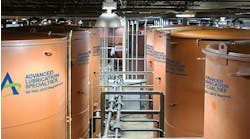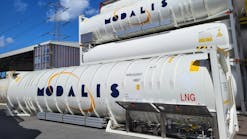Crude oil continues to drive healthy terminal sector, but challenges arising as terminal values tighten
PRESIDENT Donald Trump has been very good for the oil industry, and that includes the companies that own and operate the storage terminals that handle crude oil, refined petroleum products and liquefied natural gas.
That assessment came from Gregg Manzione, partner at Nationwide Consulting Company, which specializes in petroleum and chemical property assessments. Manzione spoke on trends in terminal sales and valuations during the International Liquid Terminals Association’s 2018 International Operating Conference held June 11-12 in Houston, Texas.
“At one time I would have said that the price of an oil terminal wasn’t tied to the price of crude oil, but that has changed,” he said. “Today, the price of crude oil has a big influence on terminal values in the United States.
“I tell young Millennials today that if they want to get a good sense of things politically, economically, and such, they need to look at crude oil. Look at where it comes from and where it goes. It’s amazing what an impact it has on world events today.
“Before Trump took office, US drilling rig counts were declining. In 2016, Kinder Morgan purchased a 75% interest in several BP terminals in a deal valued at $50 per barrel. PFB bought four terminals in the Philadelphia (Pennsylvania) region from Plains All American for $100 million (or $25 a barrel).”
Policy changes under President Trump included a Presidential Memorandum that helped facilitate the Dakota and Keystone pipelines. Regulatory changes also cut the cost of drilling on public lands, and the Trump Administration repealed the ban on offshore drilling in April 2017.
Secretary of the Interior Ryan Zinke said the goal is for the United States to become the strongest energy super power in the world. “That all bodes well for the oil industry, and the storage and terminaling sector that supports it,” Manzione said.
As part of his energy policy, President Trump has said that he wants to sell a large portion of the crude oil in the Strategic Petroleum Reserve. About 270 million barrels of oil (valued at $16 billion to $20 billion) is currently held in SPR storage.
On the liquefied natural gas side, storage terminals also are seeing growth opportunities. “A decade or more ago, the United States was importing LNG,” Manzione said. “That certainly has changed now with all of the shale gas and horizontal drilling. We’ve got more LNG than we need.”
In the wake of the shale boom many of the LNG import terminals were closed. More recently, growing numbers of the terminals have been converted to handle LNG exports.
“Areas such as Lake Charles, Louisiana have become large LNG export locations,” he said. “Many of those locations look like the boom town locations we saw when the oil and gas shale plays were running so hot.
“A lot of this LNG is being sold to China, which has become the second largest LNG importer in the world. Japan is the largest LNG importer, followed by South Korea. China imports could be valued at upwards of $25 billion if they bought all of their LNG from us.”
Crude oil also is being exported in steadily increasing amounts. Crude export restrictions were lifted in 2015 by the Obama Administration, and that launched a surge in storage terminal infrastructure spending that is still underway in the Gulf Coast region.
“Crude oil exports are running at about two million barrels per day,” Manzione said.
Terminal values
So what is the near-term outlook for petroleum terminal values? Manzione suggested that the outlook is rather mixed at this point. He listed five deals from 2017 with values ranging from $41 a barrel to $446 a barrel.
“Income potential is the big factor right now,” he said. “Why do some terminals sell for $20 a barrel and others sell for $400 a barrel? It comes down to income. How much income can be generated at each terminal?
“Other factors include terminal upgrades, environmental issues and through-put contracts. Are you making money from other aspects of the terminal operation, such as product transfers and transloading, tractor-trailer weighing and additive blending?
“Expenses must be figured in. This includes labor rates and real estate taxes, both of which are rising. Interest rates are going up.”
Manzione said the trends show that multipliers related to storage terminal values have been tightening. While the average for multipliers has been in the 15X to 16X range, the industry has seen some lows of around 5X.
“We’re seeing an emerging trend of traders cutting back on storage leases in the market due to limitations in blending capacity and tighter margins,” he said. “As a result, tank storage rates are falling.”












